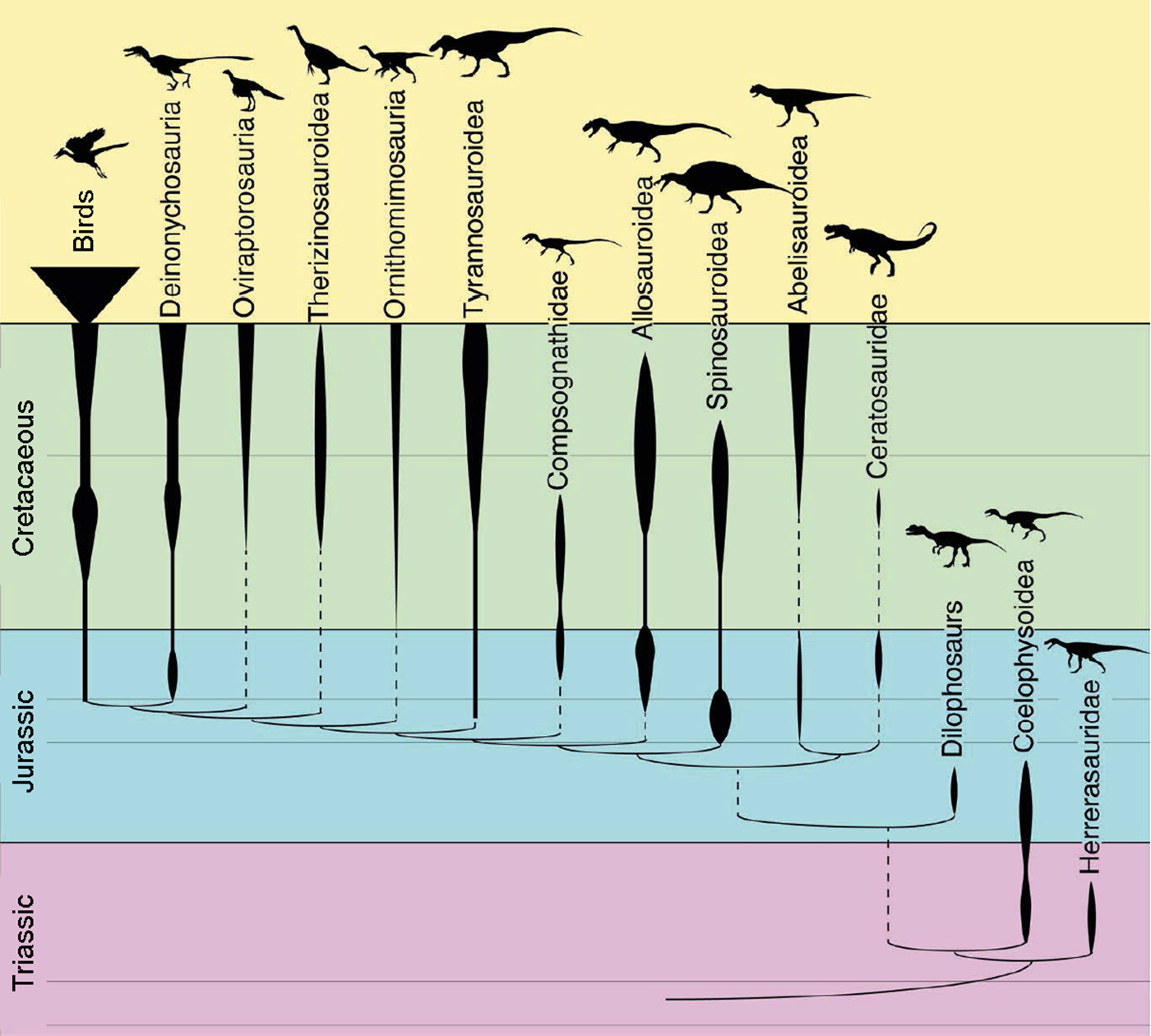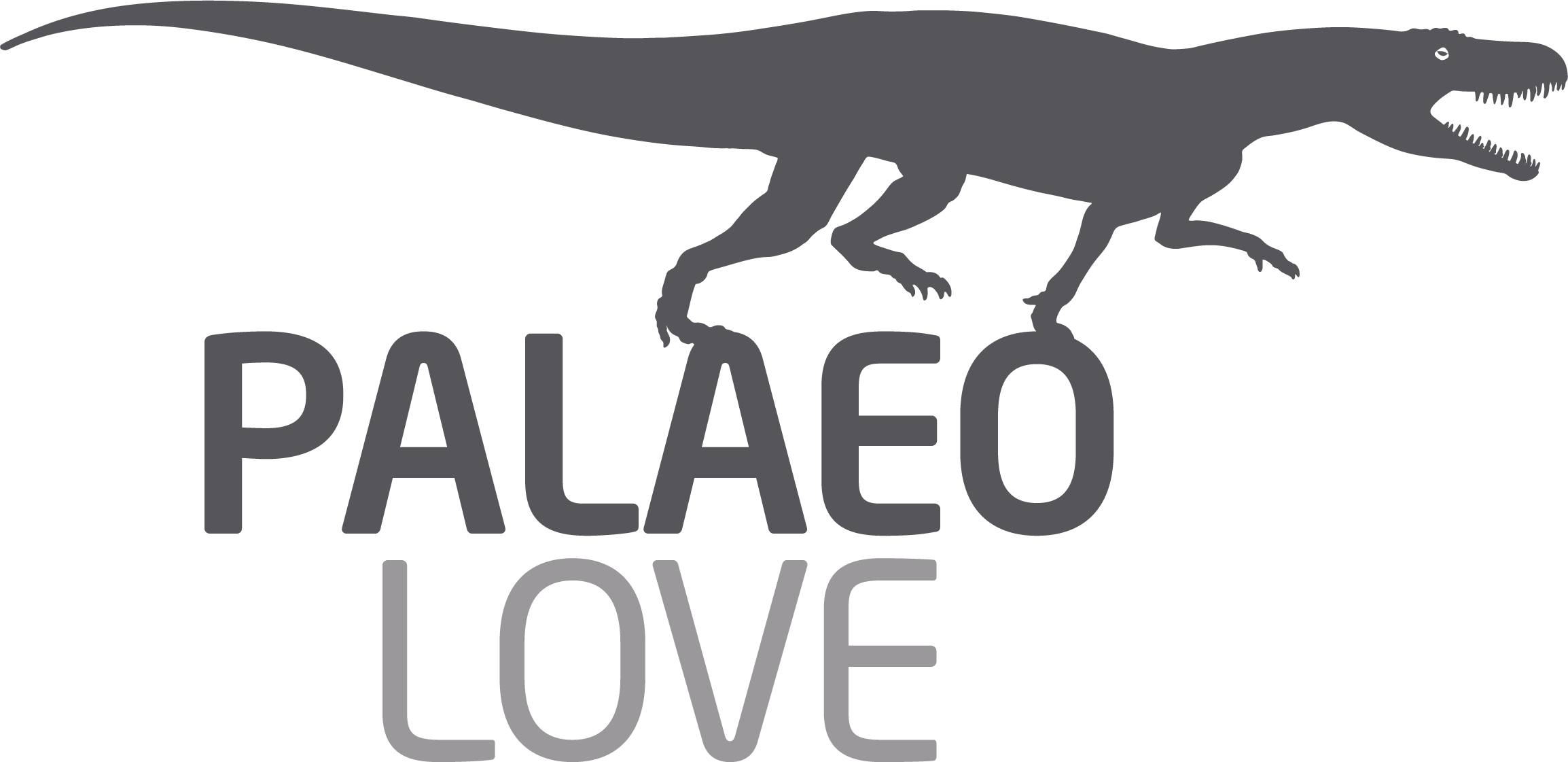A Classification of the Theropoda
The classical, non-avian theropods are a major group of mostly carnivorous dinosaurs that lived from the Late Triassic to the Cretaceous–Paleogene extinction event 66 million years ago and, therefore, survived more than 160 million years of the Mesozoic.
It is evident that birds (Aves) have evolved from carnivorous dinosaurs. When taking this into account, the theropods have been successful for 230 million years and they still are in the modern world.
Already the classical theropods of the Mesozoic were at least as diverse as are the carnivorous placental mammals today. In the Mesozoic they formed the same ecological niches with the environment that were increasingly occupied bei the mammalian clade Carnivora during the course of the Cenozoic. The non-avian theropods comprise taxa from less than chicken-size to species of clearly more than 14 meters of length (e.g., Spinosaurus from the Cretaceous of Africa).
In the past the Theropoda were simply divided into two groups, the small «coelurosaurs» (Coelurosauria = hollow-tailed lizards) and the large «carnosaurs» (Carnosauria = meat-eating lizards). However, it has turned out that size is not a proper criterion to define monophyletic units and that the evolution of theropods was far more complex than supposed. The chart below shows a modern view of the general interrelationships of major theropod lineages, but the phylogenetic context among several clades and the exact positon of various species are still controversial.
———
FOTH, C. & RAUHUT, O.W.M. (2015): Des Kaisers neue Kleider: Neues vom Urvogel Archaeopteryx. – Jahresbericht 2014 und Mitteilungen der Freunde der Bayerischen Staatssammlung für Paläontologie und Historische Geologie München e.V. 43: 65-77.
———

Relationships among non-avian theropod dinosaurs and birds (FOTH & RAUHUT 2015, modified)

